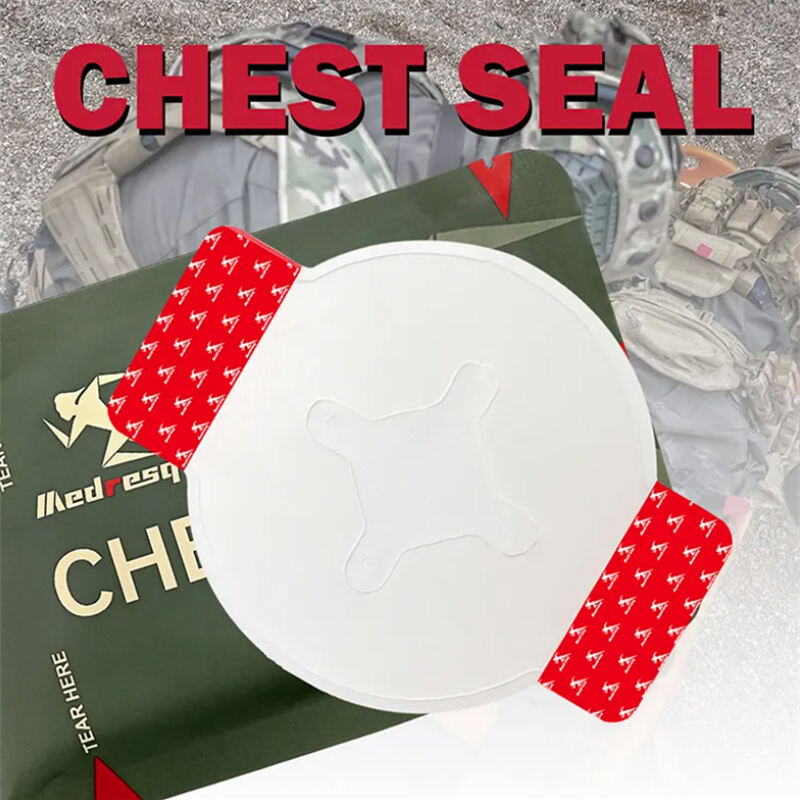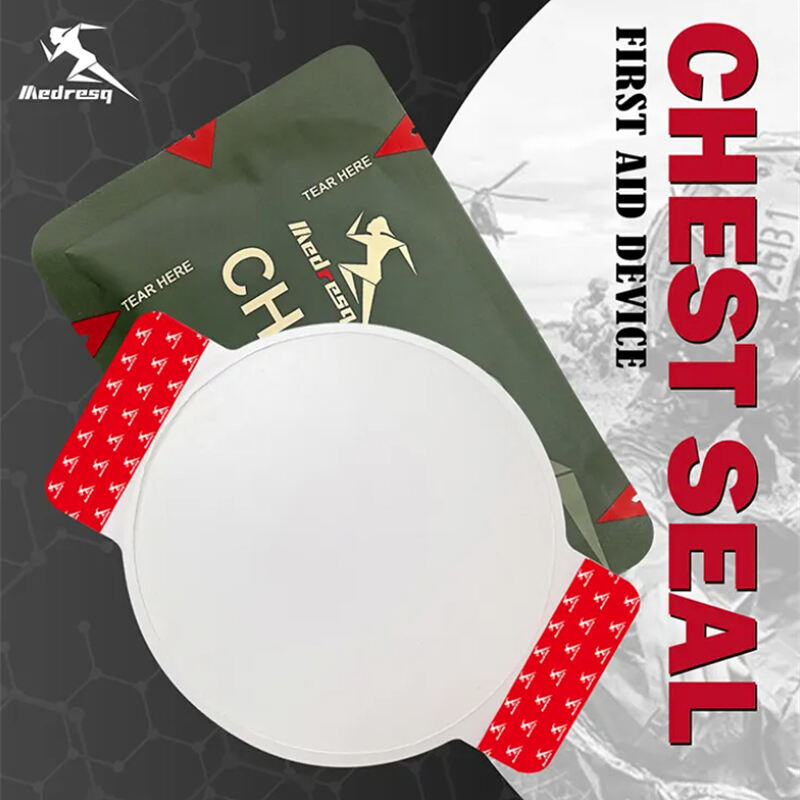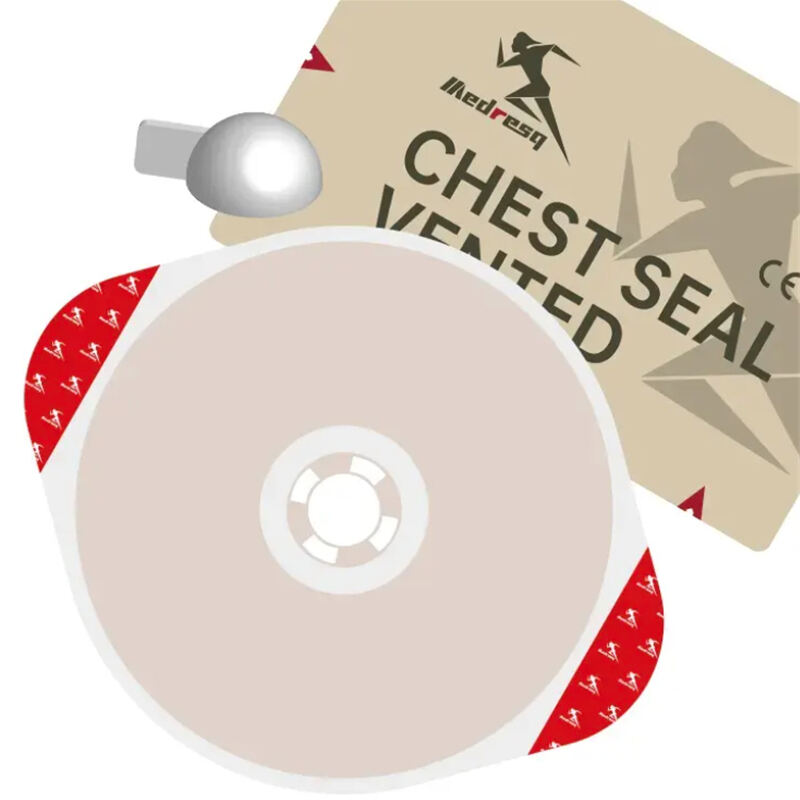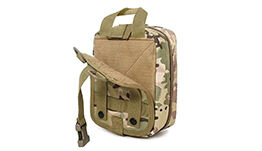Chest Seal: A Vital Tool for Managing Chest Trauma
In the realm of emergency medicine, managing chest injuries can be a life-or-death challenge. Penetrating trauma to the thoracic cavity often leads to conditions like pneumothorax or hemothorax. A quick, efficient response is critical, and one of the most important tools in the emergency responder’s kit is the chest seal.

What is a Chest Seal?
A chest seal is a medical device used to cover open chest wounds. These wounds, if untreated, can allow air to enter the chest cavity, creating pressure that collapses the lung—a life-threatening condition known as tension pneumothorax. Chest seals are designed to adhere securely to the skin, even in wet or bloody conditions, providing an airtight barrier that prevents air from entering the pleural space.
Most modern chest seals feature a one-way valve that allows air and blood to escape from the chest without letting air back in. This simple mechanism can prevent a minor injury from developing into a fatal complication.
When and How to Use a Chest Seal
Chest seals are typically applied when an open chest wound (also known as a "sucking chest wound") is observed. This type of injury often presents with a hissing sound as air enters the wound with each breath, along with difficulty breathing and signs of shock.
Steps to apply a chest seal:
Expose the wound area and wipe away blood or debris as much as possible.
Apply the chest seal directly over the wound, ensuring an airtight seal.
Monitor the patient’s breathing and watch for signs of tension pneumothorax.
In some trauma kits, you might also find kaolin hemostatic gauze or windlass rod tourniquets, which are used in conjunction with the chest seal to manage other forms of trauma.

Why Chest Seals Are Essential in Trauma Kits
For EMTs, military medics, and civilians with advanced first aid training, chest seals are a standard item in IFAKs (Individual First Aid Kits). Their role in trauma response is vital, especially in situations where professional medical care may be delayed.
These devices are compact, lightweight, and easy to use—attributes that make them ideal for field use. Whether in tactical environments, disaster zones, or wilderness rescue operations, a chest seal provides critical support in respiratory trauma management.
Integration with Other EMS Medical Equipment
In a well-prepared emergency response setup, the chest seal works in harmony with other tools:
Decompression needles to relieve pressure in the pleural cavity if a tension pneumothorax develops.
Nasopharyngeal airways to support breathing.
Foam splints to immobilize fractures.
Each of these components plays a role in comprehensive trauma care, ensuring that responders can stabilize patients before they reach a higher level of care.
Real-World Use Cases
Chest seals have been credited with saving countless lives in combat and civilian settings alike. From battlefield medics in conflict zones to paramedics responding to shootings or car accidents, their use is widespread and well-documented.
Choosing the Right Chest Seal
When selecting a chest seal, consider factors like adhesive strength, durability, packaging size, and whether the seal includes a vented or non-vented option. Some scenarios may require multiple seals for entrance and exit wounds.
Look for FDA-cleared and CE-certified products, ideally tested in extreme conditions. The packaging should also be intuitive and compact to ensure quick deployment.

Medresq: Your Trusted Partner in Chest Seal Manufacturing
At Medresq, we manufacture professional-grade chest seals designed for military, EMS, and public safety use. Our products undergo rigorous testing to ensure reliability in high-stakes environments. We supply to over 60 countries and provide full support for bulk purchasing, OEM/ODM customization, and private label services.
With a 15,000 m² facility and over 20 years of experience in emergency medical solutions, Medresq delivers quality and precision to clients worldwide. Contact us today to explore partnership opportunities and enhance your trauma care offerings with our certified chest seal solutions.
Hot News
-
Advancements in Medical Structures: Enhancing Emergency Response and Patient Care
2025-06-13
-
The Vital Role of Stretchers in Emergency Medical Care
2025-03-07
-
DEVELOPMENT AND PROSPECT OF BATTLEFIELD INDIVIDUAL FIRST AID KIT
2025-02-20
-
Enhancing Emergency Response: The Role of IFAKs in Trauma Care
2025-02-20
-
Windlass Rod Tourniquet: An Essential Component in Emergency Medical Response
2025-02-13
-
The Windlass Rod Tourniquet: A Lifesaving Device in Emergency Medical Response
2025-02-13
-
Decompression Needle: Essential Design, Usage, and Future Directions in Trauma Care
2024-11-29
 EN
EN
 FR
FR
 DE
DE
 IT
IT
 JA
JA
 KO
KO
 RU
RU
 ES
ES
 AR
AR
 BG
BG
 HR
HR
 DA
DA
 NL
NL
 FI
FI
 EL
EL
 NO
NO
 PL
PL
 PT
PT
 RO
RO
 SV
SV
 TL
TL
 ID
ID
 SR
SR
 UK
UK
 VI
VI
 SQ
SQ
 TH
TH
 TR
TR
 AF
AF
 MS
MS
 CY
CY
 IS
IS
 HY
HY
 AZ
AZ
 KA
KA
 MN
MN
 MY
MY
 KK
KK
 UZ
UZ
 CS
CS



